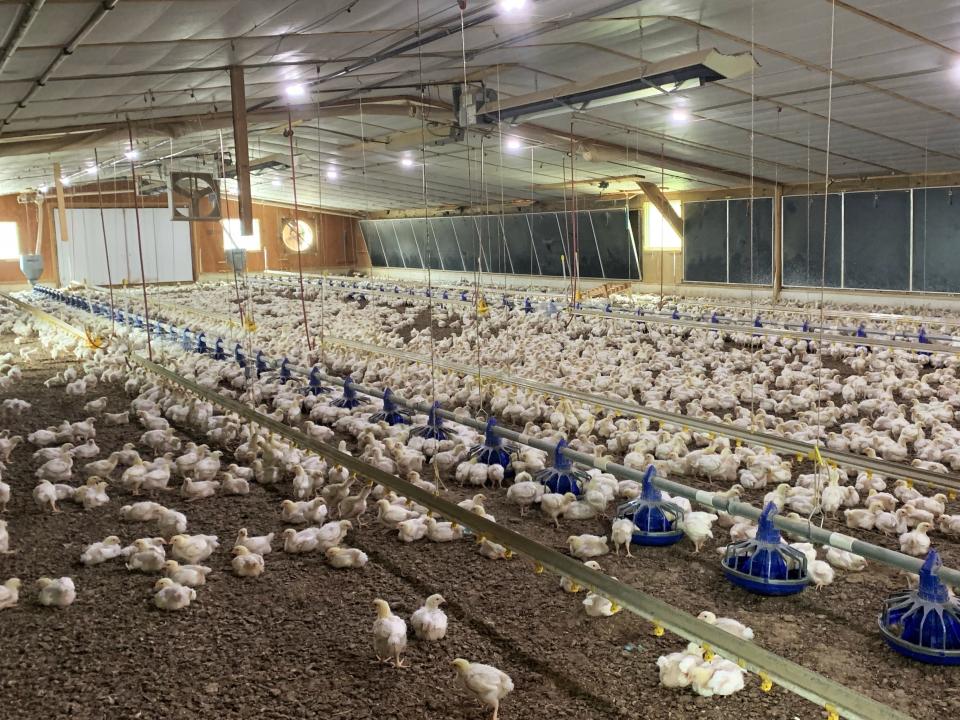President Biden's war on meat and poultry: Column
There’s been a steady drumbeat from the Biden administration painting the meat and poultry industry as the villain for the recent rise in meat and poultry prices in grocery stores.
The administration’s rhetoric has been surprising given President Joe Biden’s long history of support for the chicken industry, stemming from his 30-plus years as a senator representing Delaware, a state where chickens outnumber people and where chicken is the number one agricultural commodity.
In fact, Delmarva is home to almost 1,300 family farms raising chickens and another 18,000 jobs in the region’s processing sector, generating a total of $3.4 billion in 2020.
It’s clear that the president is getting ill-advised counsel and this administration has chosen to put politics above protein. Let’s look at the government’s own data.
According to the Department of Labor, chicken prices are up about 10 percent compared to a year ago. Economists say that unusually high demand, record input costs and labor shortages are the crucial factors driving inflation. It’s Economics 101.
The U.S. Department of Agriculture’s own Economic Research Service wrote in December 2021, “Prices have been driven up by strong domestic and international demand, labor shortages, supply chain disruptions, and high feed and other input costs.”
So, where are Americans truly seeing inflation? In nearly every part of their livelihoods, and certainly not only in the meat case. According to the latest government Consumer Price Index that was released on Jan. 12, 2022:
Gas + 50.8%
Rental cars 36%
Propane 33.8%
Used cars 37.3%
Utility gas service 24.1%
Hotels 27.6%
Bacon 18.6%
Beef 18.6%
Pork 15.1%
Furniture 13.8%
Peanut Butter 12.8%
Tires 12.4%
New cars 11.8%
Eggs 11.1%
Chicken 10.4%
Fresh fish/seafood 10.2%
Electricity 6.3%
More: Eastern Shore poised for bevy of environmental bills for legislative session
More: After history of wastewater violations, Dorchester's Valley Proteins resumes operations
A 10 percent year-over-year price increase for chicken is barely outpacing inflation — even despite major inputs like corn, soybeans, gasoline, packaging and transportation increasing by double digit costs. Yet, chicken producers are somehow the villain?
When input costs go up, finished product prices go up. This is not even factoring in truck driver shortages, backlogs at our ports, shipping delays and a government spending spree that’s causing an inflationary spiral.
The greatest cost in raising a chicken is the feed, which consists primarily of corn and soybean meal. According to USDA, corn prices increased from $3.06 per bushel (August 2020) to $6.44 per bushel (August 2021), a 110 percent increase.
It's a similar story for soybean meal. According to USDA/ERS, 2020 soybean meal per short ton has increased from $290.24 (August 2020) to $358.22 (August 2021). All in all, on a liveweight basis, feed costs for chickens have increased 56.1 percent year-over-year, according to USDA.

On top of these additional costs, the government has touted new regulations and efforts to restructure the industry, which will likely add further costs, risk and exacerbate the current market situation. They also would likely increase the cost of your wings and drumsticks.
The administration also likes to claim that consolidation in the meat and poultry industry is responsible for these higher prices. The chicken industry is the least concentrated of the animal protein sector, with the top four chicken processors accounting for 54 percent of total production — not even considered “moderately concentrated” by the government’s own standard.
Concentration in the industry has actually decreased since 2008 and is virtually the same as in 2003. Yet, it is now magically the sole cause for food inflation in 2022?
The best way the president can support Delaware’s chicken industry and its constituents is to tell the secretary of agriculture to leave chicken out of this debate and off the table in expensive and unnecessary government regulations that were left behind by the Obama administration. These were determined to be poor policy ideas then — and continue to be today.
More: 84% of Maryland chicken growers failed water control inspections, but few paid fines: Report
More: Chicken growers committed to feeding neighbors, protecting the bay: DCA
As inflation has now hit its fastest pace since 1982, is now really the time to be discussing regulatory burdens that would only add more costs to Delmarva’s No. 1 industry, and to already soaring grocery bills for Delawareans?
Mike Brown of Harbeson, Del., is president of the National Chicken Council, a trade association in Washington, D.C. representing America’s chicken producers and processors.
This article originally appeared on Salisbury Daily Times: Why has President Biden declared war on meat and poultry: Column

